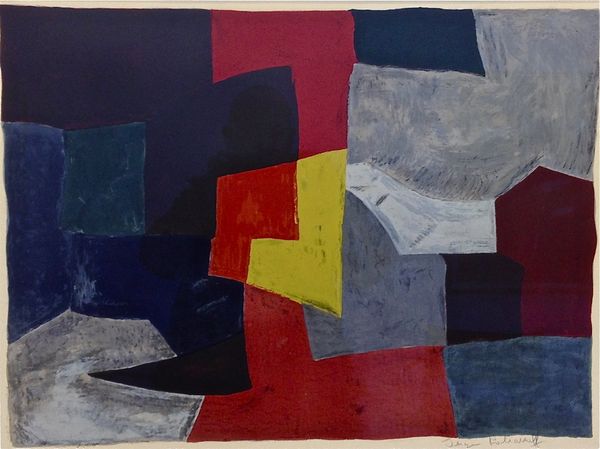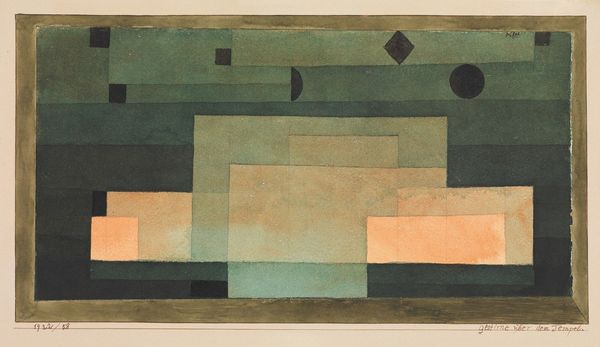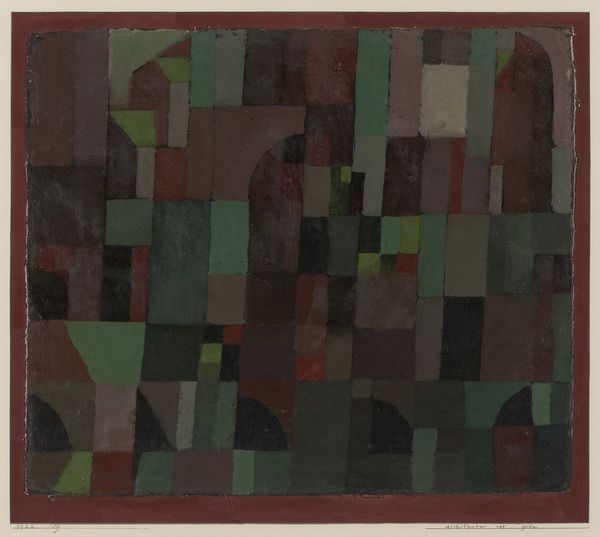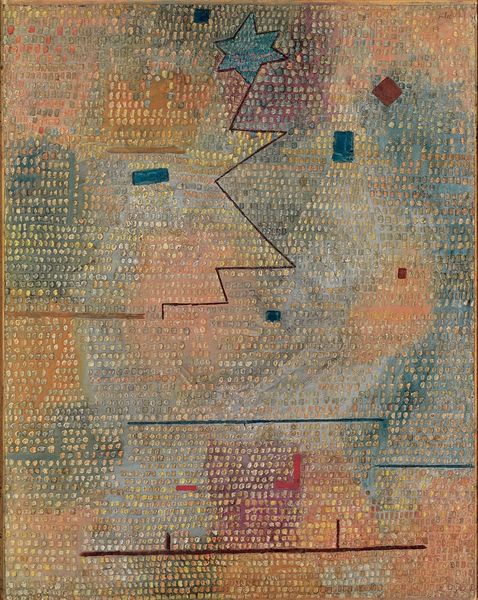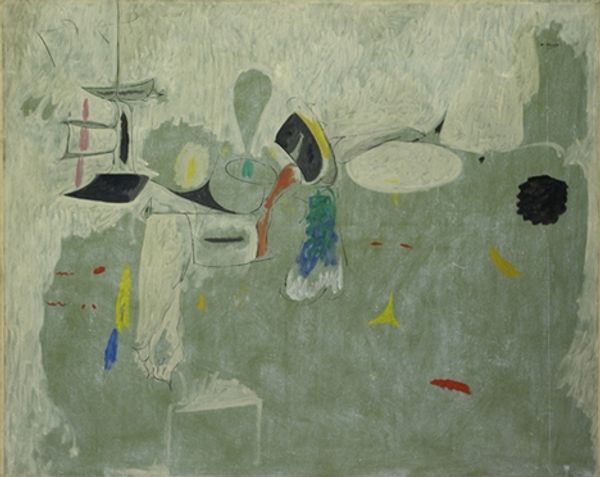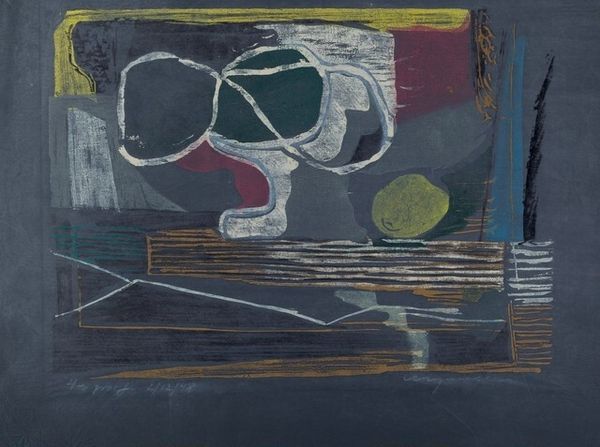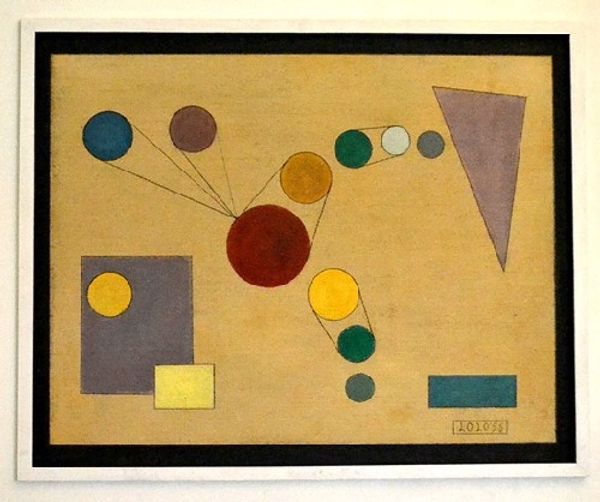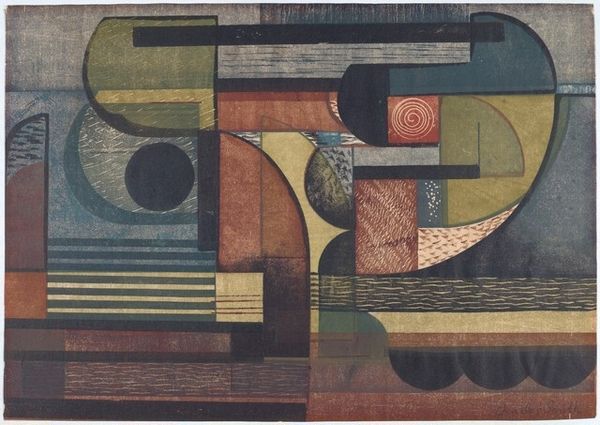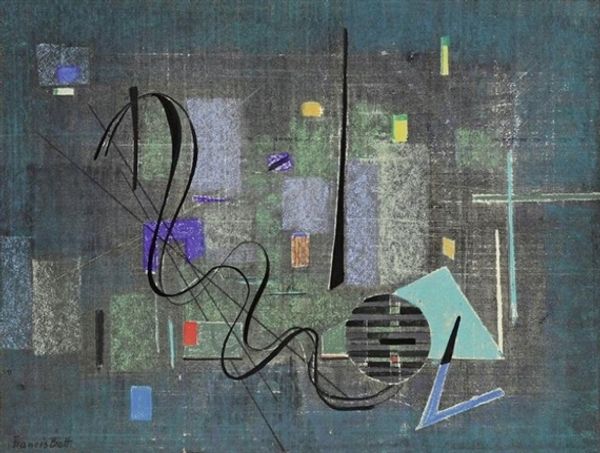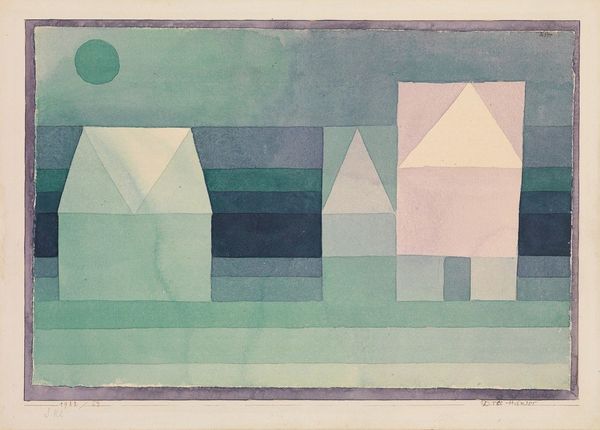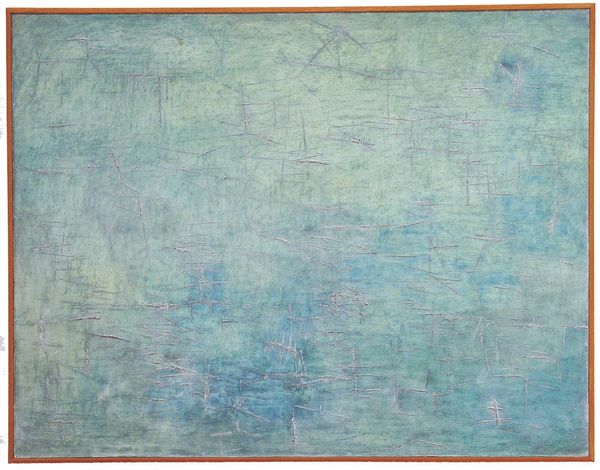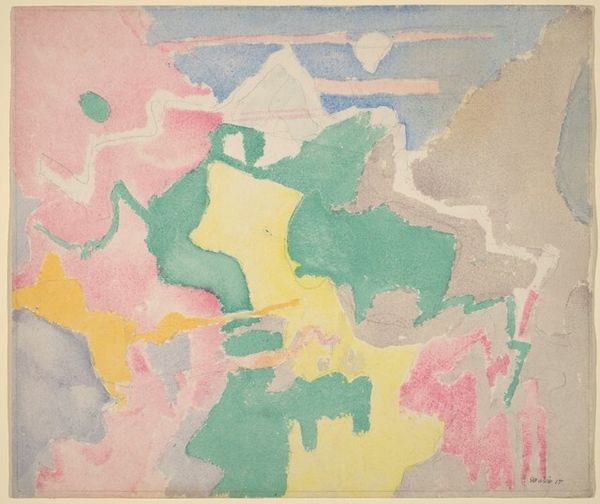
Dimensions: 69.5 x 59.8 cm
Copyright: Public domain
Curator: Wassily Kandinsky's "Circulation slowed", created in 1931, resides here at the Musée des Beaux-Arts de Nantes. Executed in mixed media, including watercolor, it epitomizes his move toward more geometric abstraction. Editor: At first glance, it's unsettling. It’s like looking at a coded map of stagnant waterways, the cool blues and greens muted as if filtered through a polluted lens. Curator: Kandinsky’s career reflects major shifts in the socio-political landscape. Before, and especially after, his time in the Bauhaus, he became preoccupied with seemingly mechanistic forms, as this painting certainly demonstrates. How might the grid background speak to his political or cultural positioning? Editor: I see it as representing rigid structures – social or political, perhaps. "Circulation slowed"—what’s not circulating? Resources? Ideas? The muted palette enhances the idea of restriction, of movement hampered by an imposed order. Who benefits from slowed circulation? Curator: Interesting observation. The early 20th century saw burgeoning interest in urban planning and social engineering, reflected in utopian and dystopian narratives. Editor: Utopias for whom? How were marginalised communities and minorities included, or were they considered in this utopianism at all? Were they intended to be allowed access? Those precise geometrical shapes feel oppressive and the grid imprisons, almost reminiscent of a cage. Curator: Perhaps we can see it less literally, too. Kandinsky was deeply interested in the spiritual in art. He felt art had the capacity to express inner psychological states. "Concerning the Spiritual in Art", his 1911 treatise, describes abstract expressionism and his understanding that colors evoke emotional responses and are felt individually. Editor: But how much can one divorce any work from its sociopolitical circumstances? Doesn’t abstraction itself become a privilege – an ability to retreat from reality available primarily to those who aren't directly harmed? Still, "Circulation slowed" acts as a powerful critique, doesn't it? Curator: Ultimately, I think this shows that Kandinsky's power resides in how his visual vocabulary remains profoundly adaptable. Editor: I'm compelled by its visual economy. Even decades later, its message still resonates. There’s something potent about the constrained palette of "Circulation slowed" that refuses easy closure.
Comments
No comments
Be the first to comment and join the conversation on the ultimate creative platform.
